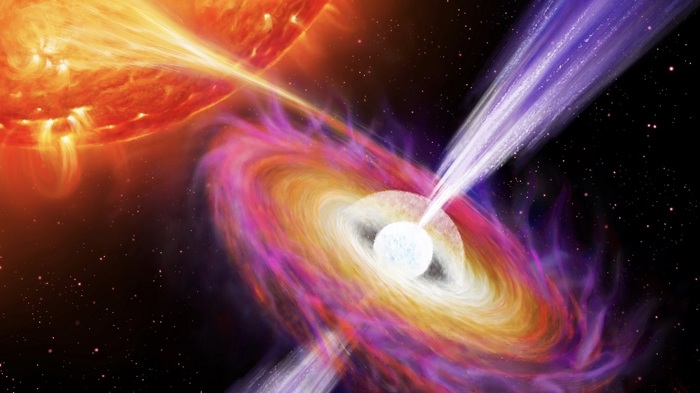There is a connection between the powerful jets of matter emitted by accreting neutron stars and the thermonuclear explosions of it allowed the speed of a jet to be directly measured, improving the understanding of the launch mechanism.
Neutron stars are the remnants of massive stars that ended their evolution with a supernova explosion. Characterized by an enormous mass compressed into a very small volume (which is why they are also called compact objects), these celestial bodies can spend their existence in solitude or in binary systems, attracting matter from the companion star to increase their mass. The matter thus accumulated in large quantities on the surface can reach such temperature and density values as to trigger powerful thermonuclear explosions similar to those of hydrogen bombs, with sudden and bright flashes of X-rays called type I bursts.
Part of the incoming matter is also expelled into space in the form of powerful jets. To understand how they are launched, the researchers studied two binary systems (4U 1728-34 and 4U 1636-536): the X-band observations, which trace the accretion flux of the neutron star, were conducted with the Integral satellite of 'European Space Agency, while the radio band monitoring, which allows studying the emission of the jets, was conducted with the Australia Telescope Compact Array of the Australian National Science Agency (Csiro). The researchers' goal was to identify any changes in radio emission following the occurrence of type I bursts and indeed they found them: increases in radio brightness, called flares, were observed within a few minutes after each single thermonuclear explosion. Putting the pieces of the puzzle together, they concluded that the evolution of the jets is closely related to these explosions.
Studying the 4U 1728-34 binary system, the researchers also found that the gas in the jet moves at about a third of the speed of light. Now that a robust method for measuring the speed of jets is available, it will be easier to determine the mechanism that drives their launch.
Reproduction reserved © Copyright ANSA

